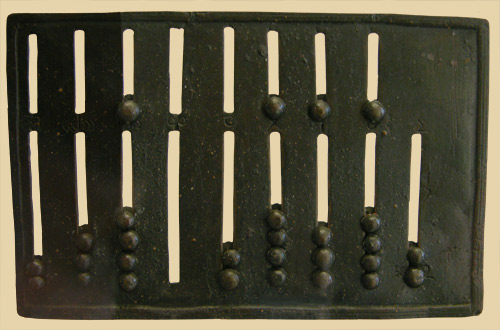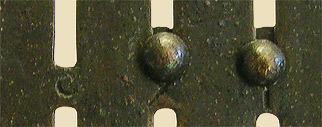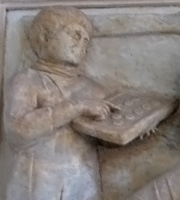

The ancient Romans designed the first portable calculating device for use by moneychangers and bankers, businessmen, and engineers. This Roman abacus, made of bronze and dating from the second century CE, is currently on display at the Bibliothèque Nationale in Paris. The device used grooved beads that could be slid up or down on numbered slots. Many of the beads on this abacus are missing; the shorter slots on top would have each contained a single bead, since these beads represented units of 5, while the longer slots on the bottom would have each contained 4 beads, since these beads represented units of 1. The slots were arranged in ascending order from right to left. The first two columns on the right were used to calculate fractions. The symbols carved on the remaining seven columns indicate their place in the system of Roman numerals. Reading from right to left, these columns represent the ones [I], the tens [X], and the hundreds [C]:

The remaining columns use archaic symbols—thousands [∞], ten thousands [((|))], hundred thousands [(((|)))], millions [X in a three-sided box]:

The abacus appears on a second-century CE funerary relief that depicts the deceased young man reclining beneath his dead father's portrait, with his grieving mother seated on the right. The slave standing on the left is operating an abacus, which symbolizes the family's success in business (note also the large moneybag in the young man's right hand):

 Close this window when finished.
Close this window when finished.